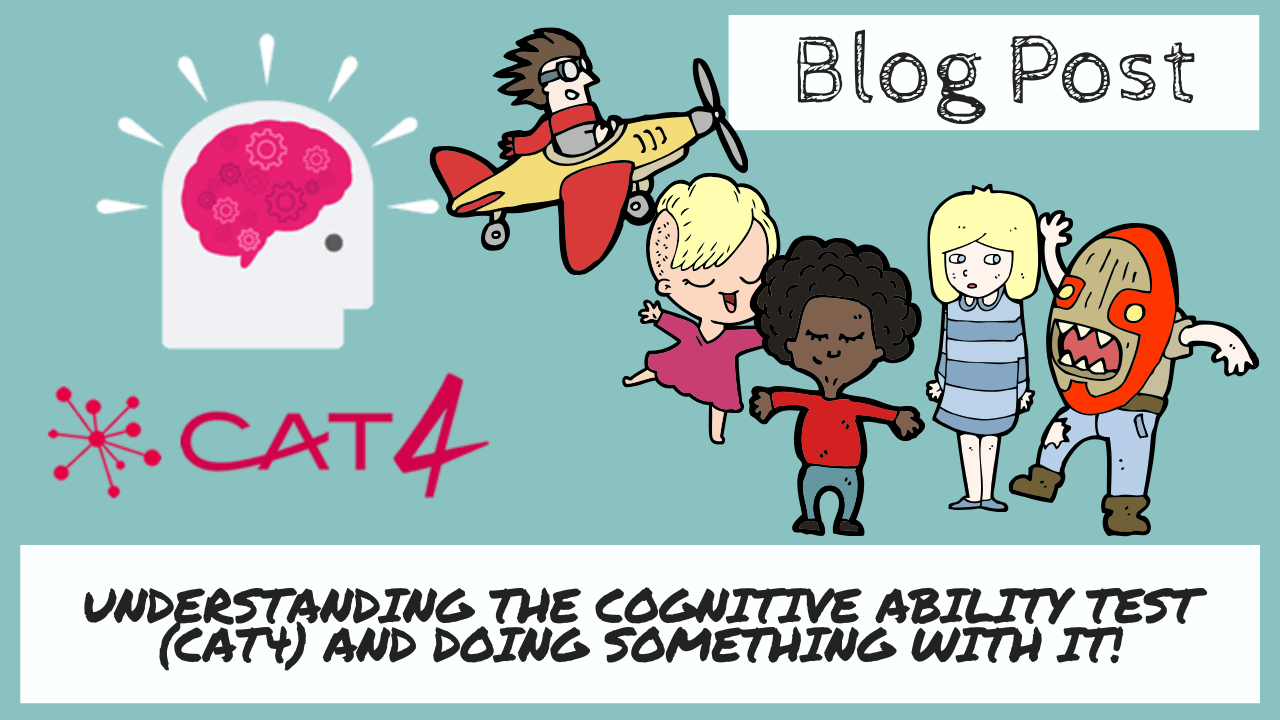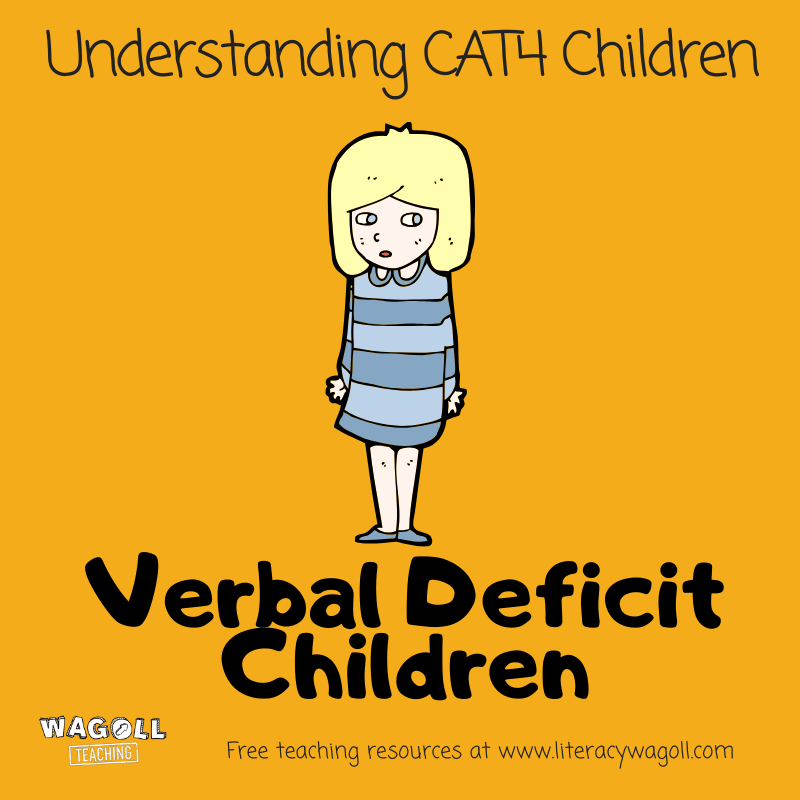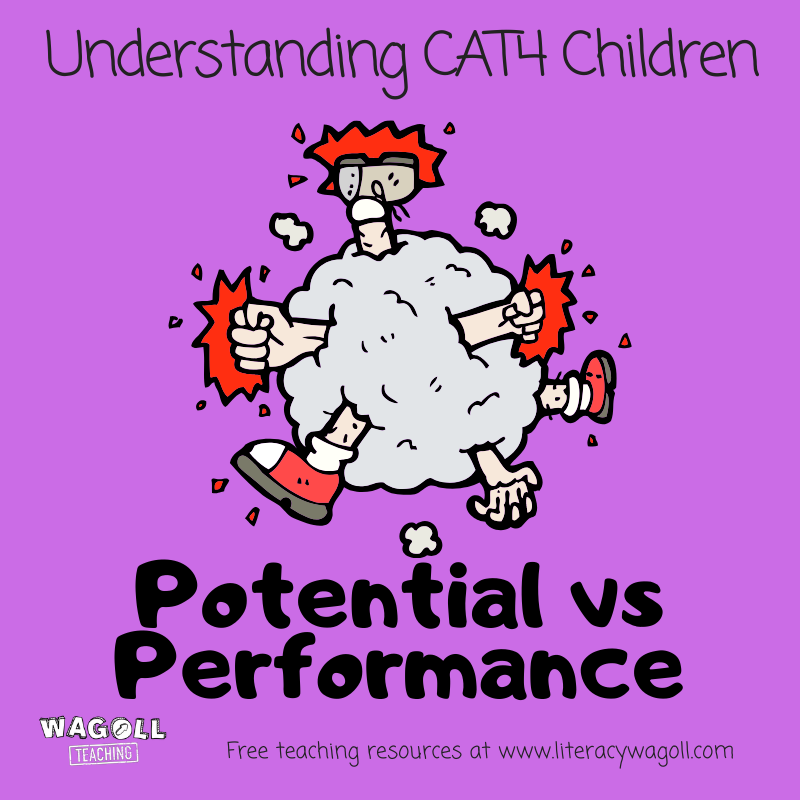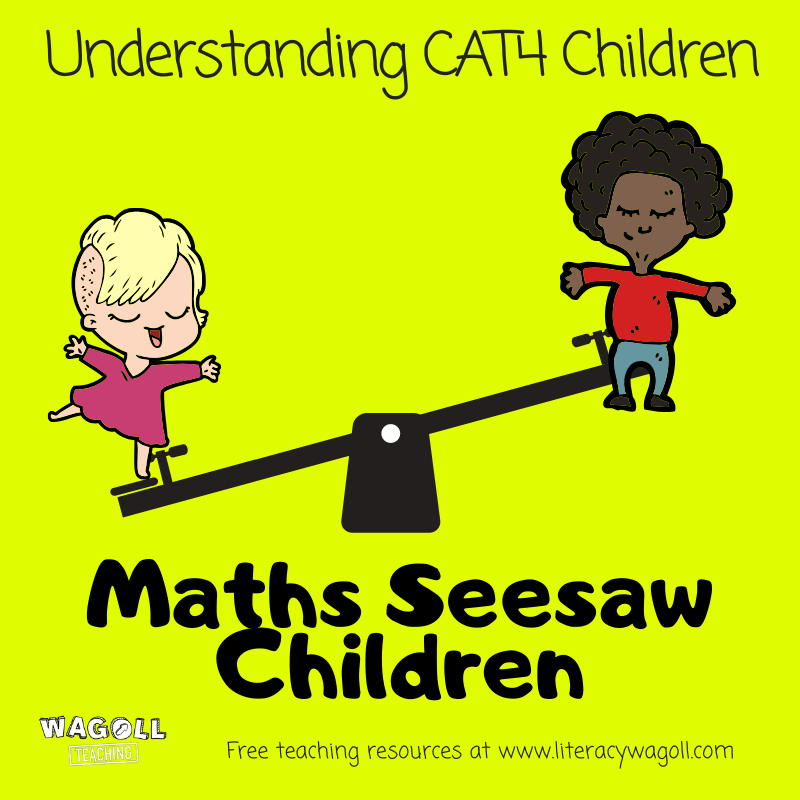|
Both in the UK and across the globe, schools had adopted the CAT4 test which measures student's four main types of ability known to make a difference to learning and achievement. CAT4 provides an independent perspective on potential pupil achievement that can be used to identify and reveal a child's true hidden potential. But once you have done the assessment what do you do next? What do all the numbers mean and how can we analyse them at a deeper level to really gain a better understanding of our children? Moreover, how do we know if we need to do things differently in the classroom?
What does CAT4 do?
Non-verbal Reasoning – problem-solving using pictures and diagrams; skills which are important in a wide range of school subjects, including maths and science-based subjects.
Spatial Reasoning – the capacity to think and draw conclusions in three dimensions, needed for many STEM subjects, but not easily measured by other datasets. Quantitative Reasoning – the ability to use numerical skills to solve problems, applicable well beyond mathematics. Example
As above, each child will receive a Standard Age Score (much like the SATS) to identify their current ability in the four areas - 100 being average.
By comparing these areas you can begin to unpick who each child is and how you can adapt your teaching in the classroom. To make it easier, I have taken different CAT4 trends to identify different 'types' of children to look for and identified simple classroom strategies to pair with them. Verbal Deficit Children
However, if a child has a Verbal score of 110 and a Non-Verbal of 130, the deficit is still 20 but it indicates something slightly different. This child has an above average Verbal score bit it still lags behind their cognitive reasoning. Simply, they may struggle to communicate just how gifted they are.
Adaptations
Both of these examples require language support but at very different levels. Below average Verbal attainers will require English Language support and development. Vocabulary sheets, picture to support understanding and practical activities will support this child in demonstrating their true potential.
The second child with a high Verbal but an even higher Non-Verbal has no issues with language understanding but their language level still lags behind their extremely high cognitive ability. Developing reasoning skills through justification and explanation will allow this child to verbalise what they understand. Questioning from the teacher will tease out their understanding and help scaffold their answers. The question matrix will assist with this. Masked Children
How is it calculated?
These are opposite of Verbal Deficit children. Compare the Verbal Score to the Non-Verbal Score. But instead look for a significantly lower Non-Verbal score!
Implications
These have a high verbal score but a low non-verbal meaning that they can talk better than they can perhaps understand. There are a few politicians who fall into this category. In the classroom, however, Masked Children have the ability to cover up misconceptions as their Verbal ability skills disguise a lack of understanding. In other words, they may not understand but are good at pretending they do!
Adaptations
This is less about intervention and more about being aware of the children who have this imbalance. Like with all children, questioning will help you as a teacher to really get an idea of whether or not your masked children really understand what you are teaching. Asking them why, and getting them to explain their understanding will give you help in identifying where it is they have misconceptions.
Potential vs Performance
Adaptations
This adaptation is more about ensuring you are setting high expectations for the children that have yet to match their potential. This doesn't necessarily mean that you give the same activity to these children as you would other high ability students. They may still have barriers to learning. As a teacher, however, it is really important to know that once those barriers have been removed, these children are more than capable of performing extremely highly!
Fuel and Fly Children
Adaptations
These children need challenge. As a teacher, the simple way of planning for these students is to ask yourself - 'If they can do this activity, what will they do next?' Mastery style activities are probably best for these students where the children have to problem solve, explain and justify. Developing their self and peer evaluation skills will also assist you in ensuring they are constantly being asked to identify how they can develop and improve. Providing Fuel and Fly children with leadership responsibilities will also assist them in teaching other children in the class.
Maths Seesaw Children
Adaptations
This feeds directly into teaching and learning. You can use a child's strength to develop their weakness. If a child prefers abstract mathematics (high Quantitative), teach them the abstract method and ask them to apply it using pictures and concrete materials such as counters.
For Spatial bias learners, provide concrete resources to use to learn new mathematical methods before asking them to apply it to abstract approaches. In Fractions, a Quantitative bias child will add fractions more confidently through calculation whilst a Spatial bias child will complete the task far more confidently by using pretend slices of pizza or shapes cut into fractions.
Conclusion
CAT4 tests can be really useful in identifying potential or gaps in a child's understanding that you may not have discovered otherwise. The above types of children are just a few of the ways that you can analyse and unpick the CAT4 results. Non-verbal and Spatial combined can indicate how well a child will understand Scientific concepts such as Light and Sound while Quantitative and Non-Verbal may also indicate how easy a child will find interpreting data and graphs.
It is also useful to discuss the results with children and ask them if they feel they have preferences to different ways of learning. Do they agree or disagree with the results? Getting the children on board with the results can assist with differentiation, as the children can make their own choices on what they learn. Additionally, they can be made aware that CAT4 scores can improve and so they can practice developing weaker areas of their CAT4 scores! Trigger that Growth Mindset! No assessment should ever cap a child or tell them they can't achieve something!
8 Comments
These are very interesting categories, and I have started to analyse some CAT4 data based on these. Thank you. However, I can't find anything else on the web about these other than for verbal deficit, and from what I can gather this term was created by a teacher who appears in promotional stuff for GL Assessments. One training session I went to suggested a verbal deficit of 15 or more was significant, whereas this site says 10. I'm in a successful international school in Cairo, but if I used a value of 10 then 37% of year 7 would be considered significant verbal deficit. Do you have any articles or sites that you used to develop these groupings?
Reply
Natasha Bryant
5/11/2022 11:21:41 am
This has just helped me explain to my son that when he's bullied by peers saying he's dumb. He can rise above it because he knows how gifted he is and doesn't need to worry about expressing himself to them. We can understand what help he needs at school. Thank you so much!
Reply
Henry
16/4/2023 04:36:47 am
I would not advise practising for a CAT test. They are designed to taken without prior preparation, and the scores will not have the same meaning.
Reply
Leave a Reply. |
SearchWith a keen interest in the neuroscience and psychology of learning, WAGOLL Teaching is about sharing research alongside great, simple teaching ideas to a global teaching community.
Ben has been in education for over 10 years and is passionate about simplifying high quality teaching and learning through innovative and practical approaches in the classroom. sUBSCRIBE |
|
Who are we? |
With a keen interest in the neuroscience and psychology of learning, WAGOLL Teaching is about sharing research alongside great, simple teaching ideas to a global teaching community.
|
All copyright reserved ©.
I would like to remind all visitors to this website that all pages on this site are copyright protected, unless stated. Most importantly, this site is for the use and enjoyment of all children, parents, guardians, carers and teachers who are involved in WAGOLL Teaching. Please use the resources/ideas as you need without replicating them for your own gains.
I would like to remind all visitors to this website that all pages on this site are copyright protected, unless stated. Most importantly, this site is for the use and enjoyment of all children, parents, guardians, carers and teachers who are involved in WAGOLL Teaching. Please use the resources/ideas as you need without replicating them for your own gains.













 RSS Feed
RSS Feed


